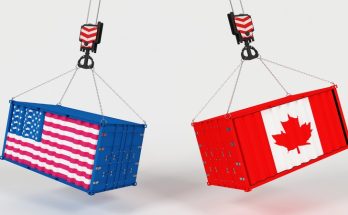Ottawa/CMEDIA: The annual inflation rate climbed its highest level since August 1991 reaching 5.7 percent in February, and the second straight month over 5 percent, Statistics Canada reports says.
February’s increase was caused mainly by higher gasoline prices that were up 32.3 percent compared with February 2021 and 6.9 percent from a month earlier.
The headline inflation rate would have been only 4.7 percent in February if gasoline prices were excluded, Statistics Canada says.
Grocery store prices were up 7.4 percent, the largest yearly increase since May 2009, pushed higher by rising fuel costs that are being passed on to consumers.
The shelter prices including prices for homes and rental units, rose at their fastest pace since August 1983.
The average of the three measures for core inflation closely tracked by the Bank of Canada, was 3.5 percent for February, up from the 3.2 percent reported in January.
The bank raised its key policy rate to 0.5 percent, two weeks ago, marking the first hike in two years.
Warnings have been issued by the economists that the inflation rate could go still higher on the back of skyrocketing prices at the gas pumps and grocery stores as Russia’s invasion of Ukraine pushed up global oil and wheat prices.
Here’s what happened in the provinces (previous month in brackets):
- Newfoundland and Labrador: 5.1 per cent (4.0)
- Prince Edward Island: 7.4 per cent (7.1)
- Nova Scotia: 5.7 per cent (4.9)
- New Brunswick: 6.0 per cent (5.3)
- Quebec: 5.4 per cent (5.1)
- Ontario: 6.1 per cent (5.7)
- Manitoba: 6.1 per cent (5.5)
- Saskatchewan: 4.7 per cent (4.2)
- Alberta: 5.5 per cent (4.8)
- British Columbia: 4.7 per cent (4.3)
The agency also released rates for major cities, but cautioned that figures may have fluctuated widely because they are based on small statistical samples (previous month in brackets):
- St. John’s, N.L.: 4.7 per cent (3.5)
- Charlottetown-Summerside: 7.7 per cent (7.3)
- Halifax: 5.4 per cent (4.7)
- Saint John, N.B.: 5.5 per cent (5.1)
- Quebec City: 4.9 per cent (4.4)
- Montreal: 5.4 per cent (5.0)
- Ottawa: 6.3 per cent (5.9)
- Toronto: 5.7 per cent (5.2)
- Thunder Bay, Ont.: 5.4 per cent (5.7)
- Winnipeg: 5.8 per cent (5.1)
- Regina: 4.8 per cent (4.1)
- Saskatoon: 4.3 per cent (3.8)
- Edmonton: 5.5 per cent (4.6)
- Calgary: 6.4 per cent (5.4)
- Vancouver: 4.8 per cent (4.3)
- Victoria: 5.0 per cent (4.3)
- Whitehorse: 4.5 per cent (3.7)
- Yellowknife: 5.4 per cent (4.0)
- Iqaluit: 2.9 per cent (2.1)
#Canada; #InflationInCanada; #GasPrices; #WheatPrices





